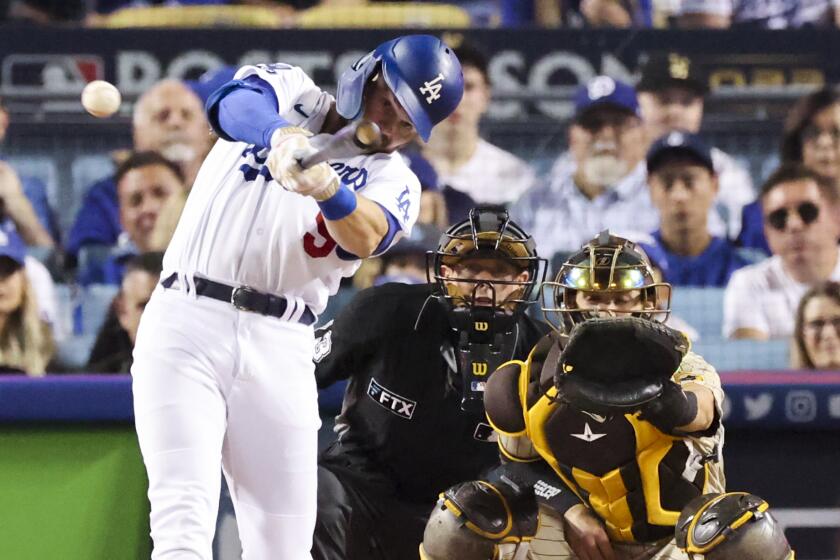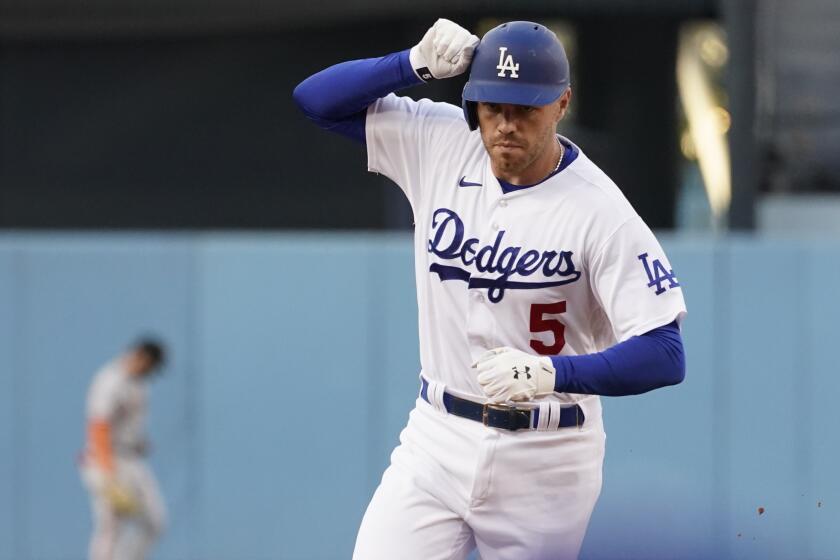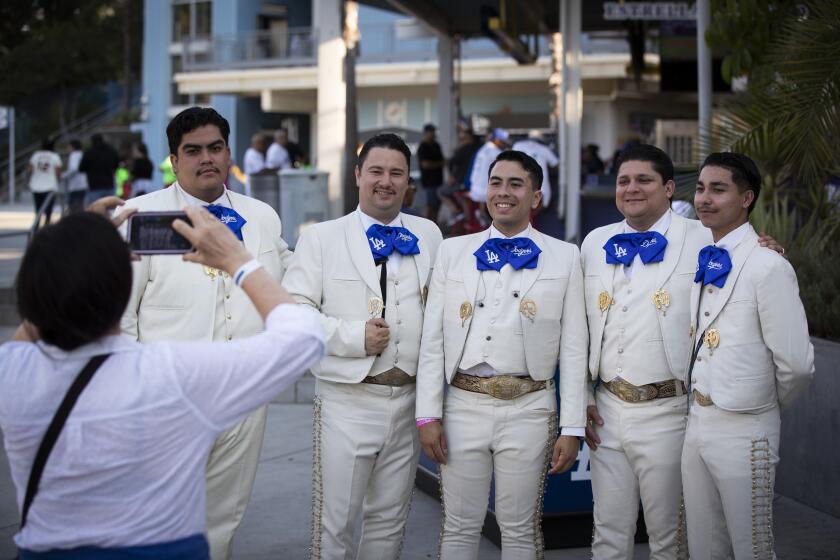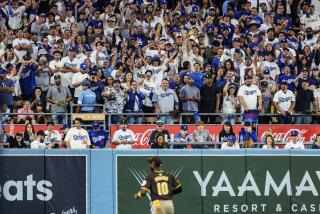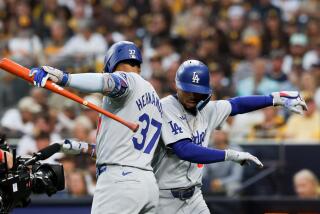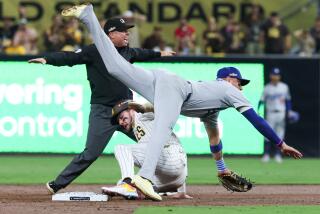Padres’ Mike Clevinger struggled with Dodgers hitters and his PitchCom device
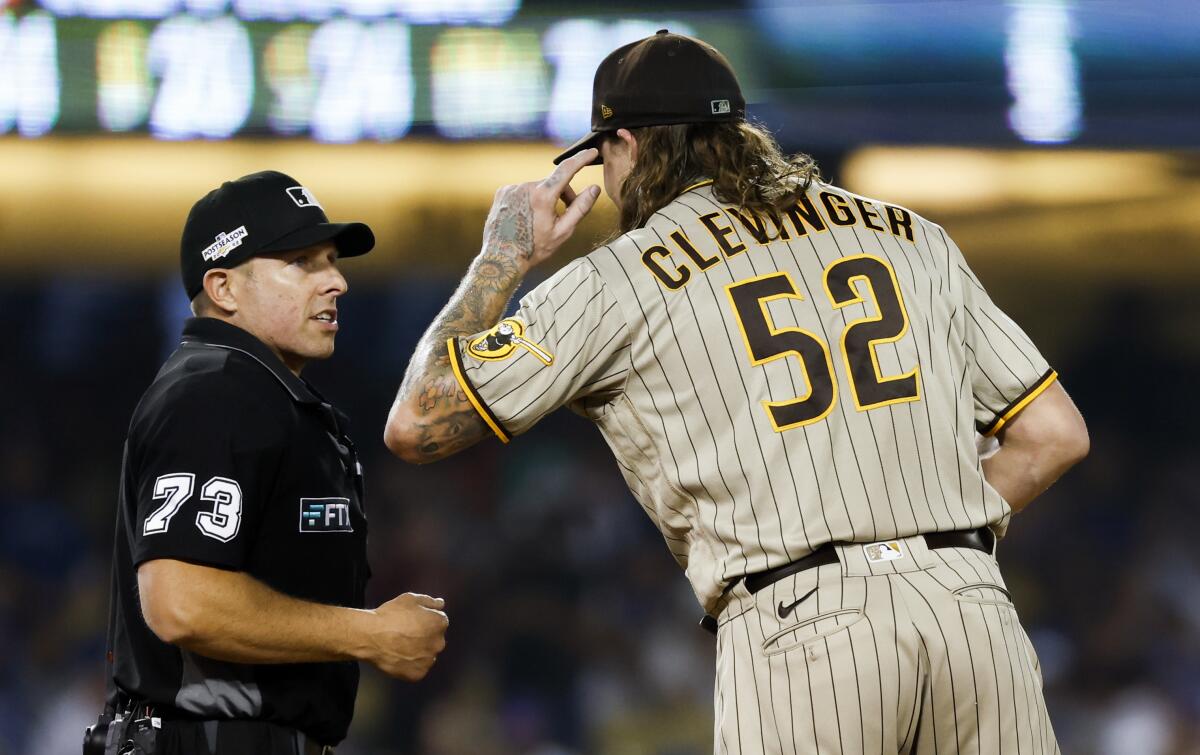
There was one out in the third inning Tuesday night, and Mike Clevinger had two problems.
First, the Dodgers were threatening to add to their 2-0 lead in Game 1 of the National League Division Series. They had a runner at second base with slugger Will Smith at the plate. Clevinger was behind in the count 2-0. It wasn’t looking great for the San Diego Padres.
But the second issue was more pressing in that moment: Clevinger couldn’t hear his catcher’s pitch call through the PitchCom transmitter embedded in the band of his cap.
The disconnect forced Clevinger to pause. Catcher Austin Nola and the home-plate umpire went out to the mound. A clubhouse attendant emerged from the Padres’ dugout with another small black PitchCom device. Clevinger told him he didn’t need it; he realized he could just turn the volume up. The problem, apparently, was fixed. Smith clobbered the next pitch for an RBI double in the Dodgers’ 5-3 win.
Smith, the Dodgers’ starting catcher, said none of the Dodgers’ five pitchers in Game 1 had problems with PitchCom. But difficulties have surfaced throughout Major League Baseball since the technology was introduced during spring training with a dual purpose: to curb illegal sign stealing and to quicken game pace.
The Dodgers begin their World Series quest in earnest with a 5-3 win over the San Diego Padres in Game 1 of the best-of-five National League Division Series.
In May, for example, San Francisco Giants reliever Jose Alvarez couldn’t hear his catcher’s call and stepped off the rubber to hear a sign because Dodger Stadium got so loud. Dodgers manager Dave Roberts contested that a pitcher couldn’t receive signs off the rubber; he was told that rule was erased this season.
On Sunday, New York Mets pitcher Chris Bassitt had the same problem against the Padres — except that it was too loud for him at his home ballpark. The Padres chased Bassitt after four innings and won to advance to the NLDS.
The Dodgers haven’t encountered any of those issues, but opponents have more than once playing at Chavez Ravine
“I don’t think it will have an impact, but it could,” Roberts said. “I think that we have the five or six mound visits that if it has to be because of communication and we have to use a visit for that, it would be certainly unfortunate. But we’re going to have that thing turned up pretty high.”
The PitchCom process starts with the catcher pressing two buttons on a keypad to communicate with the pitcher. Teams are allowed to have three other players wear devices to hear the sign.
Dodgers fans might not view the Padres as real rivals, but there’s plenty about their NLDS opponent worth loathing.
Last month, MLB informed pitchers they could use an earpiece that connected through the device in their caps, according to a person with knowledge of the situation. Nobody has yet been seen using it.
The technology wasn’t initally universally embraced. Some transitioned by opening day. Others warmed up to the idea as the season went along. A few held out entirely.
Tyler Anderson was the last Dodgers pitcher to transition to the new practice. On Wednesday, he explained that he waited to use it because he didn’t want to rely on it without having a backup plan. The left-hander is scheduled to start Game 3 or 4 of the NLDS. He said he’s occasionally encountered issues with the sound but will use the technology whenever he pitches in the playoffs.
“Hopefully, without any technology fails, it’s going to be the way to go,” Anderson said.
Dodgers reliever Evan Phillips said the team’s pitching staff used it differently at first: Instead of receiving a pitch type and location, they heard a cue for the catcher’s sign sequencing. The catcher relayed which sign to look for with his fingers. It was the traditional method mixed with the modern.
A month into the season, Phillips said, he was using it to hear the pitch type and location, completely eliminating fingers from the process.
“It was an adjustment just in hearing it versus seeing it,” Phillips said. “But it didn’t impact the competition at all.”
Mariachis have become a tradition at Dodger Stadium, with performances during games. The team’s effort to connect with Latino fans has sparked pride.
It was around that time that another PitchCom change was introduced for the Dodgers. The device originally featured a monotone, robotic voice. It was replaced by a human in June.
“I don’t know who did it for us, but I think someone voiced it,” Phillips said. “It’s like the mystery man.”
Over the weekend, during the Dodgers’ intrasquad games inside an empty Dodger Stadium, the mystery voice on the mound could be heard from the dugouts. The pitchers had to turn the volume down from 75% to 10% to avoid giving hitters an edge. They turned it back up Tuesday with more than 56,000 people making their presence heard.
More to Read
Are you a true-blue fan?
Get our Dodgers Dugout newsletter for insights, news and much more.
You may occasionally receive promotional content from the Los Angeles Times.

